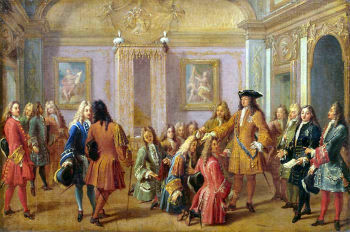US political system
You USA conquered their independence in 1776. The process of breaking with the British required the then former settlers to build their own political model, which suited the circumstances of the time. The model adopted was the federative republicanpresidentialist.
What does that mean? The thirteen former colonies that formed the US, at the time of independence, already had considerable autonomy in legal, political and economic terms. When they became independent, the model of political representation most consistent with this autonomy was the republican federative, that is, each colony became a state with its own institutions and laws, but subject to an administrative power central, the Unity, or federal power. O president of the republic, in this system, is the head of State and Government of the Federative Republic.
But how is the US president elected?Well, presidential elections in the US are not elections with direct voting as in Brazil. The people, that is, the mass of voters, do not vote directly for the presidential candidate on a specific day of the year, with the final result on the same day (if there was no second round). In the US, the election process is divided into two phases:
the candidate's nomination process for the National Party Convention, or primary elections.
the final election by schoolElectoral, which takes place in two days: always on the tuesday after the first monday of the month of novemberand the first Monday after the second Wednesday of December.
Candidate registration
The first phase of the elections runs from January to June. Candidates from the same party (usually the two largest, Republican or Democrat - for more information, click on here) compete among themselves to be nominated for election in the Electoral College. To do so, these candidates must inform the party of their interest in contesting the elections and register their registration with the FEC (Federal Election Commission) to start fundraising for the campaign.
Delegate and the primary elections
In both phases, who effectively vote are the delegates, but you must be careful with this term. In the first phase, delegates are called “delegates”. These are chosen by the large mass of voters from each state in the Federation. These voters are linked, depending on political preferences, to one of the two major US political parties: the BrokenDemocrat it's the BrokenRepublican.
Currently, the number of GOP delegates in the 50 US states is around 2,470, and the Democratic Party around 3,630. The candidate who gets half plus 1 of the votes of those delegates gets to go to the second phase. In the second phase, voters will again go to the polls to vote for their candidates, on the Tuesday after the first Monday in November, as a way of signaling who they want to win, since the vote is indirect. But signal to whom? Who will finally cast the direct vote to elect the president? Those who vote are other delegates, called "electors” (which we will see later), which are chosen at the time of the Party Conventions.
Do not stop now... There's more after the advertising ;)
the district vote
We said above that the delegates, who decide in the Party Convention which candidate will run in the final elections, are elected by the mass of voters, generally linked to the two parties mentioned. But how is this election made? This is where one of the most confusing points to understand the US presidential election.
The voting system in this phase differs from state to state in the Federation. The same state can be divided into districts of voters. Each district elects its delegates, who join other districts to ultimately vote at the Convention for the best candidate of their respective parties. And more: the forms of district voting are also different. They can be done in small communities, such as neighborhood associations (so-called caucuses), or by formal ballot (so-called primaries), being this form open (Voters need not necessarily be linked to the candidate's party) or closed (Voters must be registered with the candidate's party). The first state of the federation to start preliminary elections is Iowa, which works as a “thermometer” of the previews.
It is noteworthy that voting in the US is not mandatory, as in Brazil, but optional.
Elector and the Electoral College
After candidates win the caucuses in the Party Conventions, they become the only candidates of their respective parties and the electoral process enters the second phase. In this second phase, we have the figure of "elector”, the delegate who will vote directly on the first Monday after the second Wednesday in December.
The proportion of "electors” for each of the two candidates (the Democrat and the Republican) is given by the amount of votes they received in each state. In almost every state the following system works: if the Republican candidate got the majority of popular votes, even if it is 51% to 49%, he wins all the votes of the delegates of that state. Therefore, states with greater numbers of delegates, such as California, receive greater attention from candidates and the media.
In total, there are 538 delegates in the US. The proportion of delegates by state is determined by the number of senators and deputies that represent that state in Congress. California, for example, has 55 delegates because it has 2 senators plus 53 deputies in Congress. Both the presidential candidate and the vice-presidential candidate must have an absolute majority of the delegates' votes to be elected, therefore, at least 270 votes.
The possession, "Inaugurationday”, of the president and vice-president takes place on January 20th.
By Me. Cláudio Fernandes



